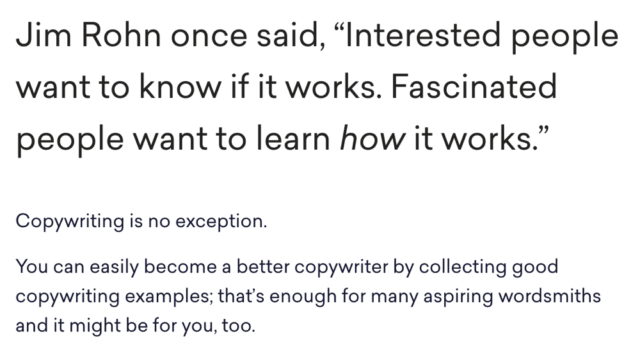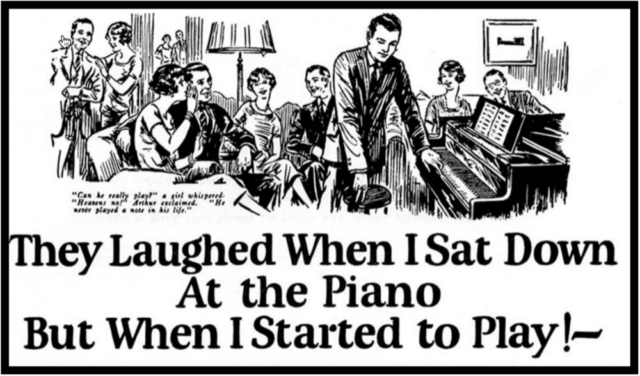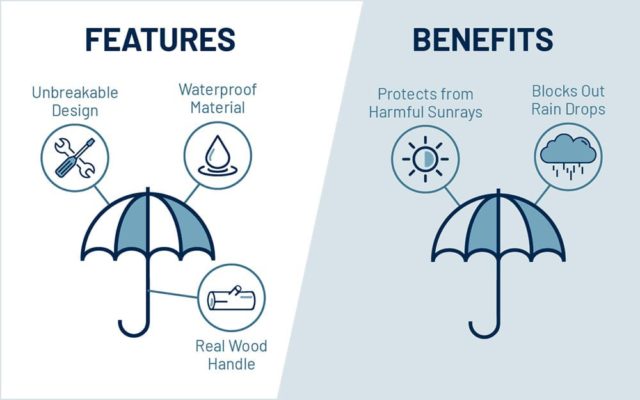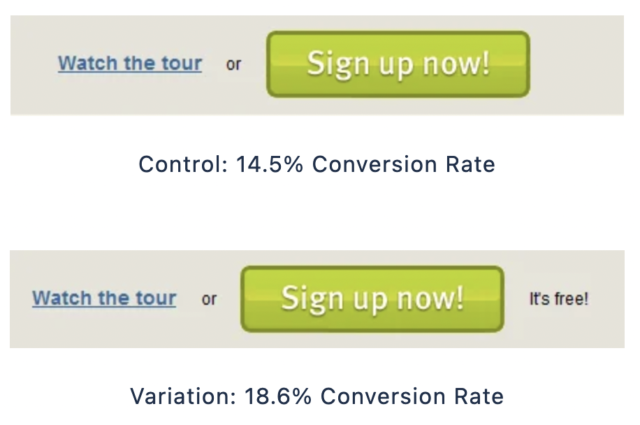From researching keywords to building backlinks, you’re doing everything right to increase website traffic. Your SEO efforts may be resulting in more clicks, but you’re not getting the conversions that are essential for your success. If your conversion rate is disappointing, your website’s copy might be to blame.
While SEO techniques bring more visitors to your website, the quality of your copy determines whether they stay or bounce away. The average amount of time people spend on a website is two to three minutes. Creating engaging copy is crucial to make people stay longer and increase your conversions.
So how can you create content that both Google and your site visitors will love? Use these 16 tips to write compelling website copy that drives conversions:
1. Identify Your Audience
The first and most important thing to do before creating copy is to identify your target audience. Identifying your potential customers will help you understand their pain points. Once you figure out what they’re looking for, you can create useful content that meets their needs. And when your site’s visitors see that you have solutions to their problems, they’re more likely to convert.
If you’re not sure who to write for, then it’s a good idea to develop customer personas. A customer persona uses market research and current customer data to produce a fictional representation of your ideal buyer. With this information, you can write targeted website copy to better convince prospects that your solution can help overcome their challenges.
2. Keep Customer Journey in Mind
Providing valuable information is great. But it won’t do anything for you if it’s not delivered to people at the right time. Customers have different needs at different stages of their buying journey. You can’t write the same content for someone who is interested in your brand but has no intention of buying, and someone who is an existing customer.
To maximize your conversion rate, your website’s copy should align with where customers are in their buying journey. A great way to do this is to map search queries ⏤ or keywords ⏤ to different stages of the buyer’s journey and write content accordingly. This laser-focused approach can move leads down the sales funnel and increase your chances of conversions.
3. Craft Catchy Titles and Headings
You spend hours writing thousands of words of high-quality content, yet most people won’t read it. That’s the sad reality of content on the web. Only 20% of site visitors will take the time to read your entire copy. What do the other 80% do? Skim through your headings! Despite being only 5-20 words, your title and headings are the most important website copy you will write.
Writing catchy headlines and headings can increase your CTR rate and make visitors stay longer on your page. It takes more than keyword placement to write good headlines. Crafting attention-grabbing titles is as much a work of art as it is science. Use these headline best practices to attract and keep site visitors:
- Tell readers what they will gain from reading your article
- Ask a question: It triggers interest and curiosity
- Keep it short: Less than 11 words and 65 characters
- Include numbers: Use numerals ⏤ do not spell it out
- Use popular headline phrases like “x ways to”, “why you should”, “how to …”
4. Write a Killer Introduction Paragraph

Source: Sleeknote
So now you’ve learned that headlines are the most important element of website copy. Are you wondering what is the second most important element? You’ve just read it ⏤ the introduction paragraph! A captivating introduction hooks the reader and draws them into the rest of your content. Without an engaging introduction, the visitor will bounce off your website in seconds.
What makes a great introductory paragraph? A solid intro should grab the reader’s attention, connect with them through addressing their needs, and make them stay by promising to help. The most important sentence in the introduction paragraph is the first one. Make sure it induces the reader to proceed to the second sentence if you want to improve your conversion rate.
5. Pay Attention to Grammar and Spelling
Imagine reading a website copy that is riddled with spelling and grammar mistakes. Would you trust or buy from this brand? Probably not. Most people won’t either. A whopping 74% of internet users pay attention to the quality of spelling and grammar on a website. More than 59% of web visitors will not do business with a brand that has spelling and grammar errors in its copy.
It’s easy to see why. When you don’t put in the effort to refine your website’s copy, it reflects poorly on the quality of your products and services. Therefore writing impeccable copy is crucial for building a strong brand name. So don’t be lazy. Take some time to proofread and edit your content before publishing it. You can use free grammar tools like Grammarly to polish your copy.
6. Use “You” in Your Content
SEO copywriting is becoming all about creating content for Google. While optimizing for search engines is important, it’s people ⏤ not Google’s robots ⏤ that end up buying your products or services. Copy that prioritizes SEO over user engagement can make you lose customers and money. If you want to produce website copy that converts, write for people, not search engines.
Copy should be friendly and conversational to engage web users. The best way to write conversational copy is to use plenty of “you” and “your” language. Addressing your readers directly will help you form a closer connection with them. When you connect with readers on a personal level, you are more likely to convert them.
7. Include Power Words
Copy should engage, educate, and encourage action. You won’t be able to get much action out of your readers with bland words and dull messages. The words you choose have a tremendous impact on your readers’ psychology. Using power words can inject vigor into website copy and entice readers to perform your desired action.
Power words are words that trigger a strong emotional response. A sprinkle of these words can elevate your copy from ordinary to extraordinary. Are you wondering what words to use to add some pizzazz to your writing? Here is a list of the most powerful words to use in copywriting:
- You ⏤ Makes copy personal
- Free ⏤ Reduces financial risk
- Instantly ⏤ We want things as soon as possible
- New ⏤ Adds excitement and motivates users to explore
- Because ⏤ Offers a reason why visitors should convert
8. Sell Them With a Story

Source: Socratic Copy
Many businesses are using storytelling in their website copy ⏤ and for good reason. Stories not only make your content more relatable but also increase oxytocin production. Oxytocin is a hormone that is linked to warm, fuzzy feelings. The hormone promotes prosocial behaviors like compassion and trust. Trust is the second most important factor after price in people’s buying decisions.
Storytelling is a very effective strategy for creating copy that converts. Instead of stuffing your content with pushy sales pitches that don’t work, use storytelling techniques to build connections and increase conversions. Some of the best places to incorporate stories in your website copy are the introduction paragraph, the “about us” page, and your case studies.
9. Leverage Social Proof
When you’re in a consumer goods trade show, are you automatically drawn to booths that have larger crowds? Have you ever bought a product you didn’t really like but got it anyway because it was popular? If you answered yes, and yes, you followed your human instinct. Humans are social creatures that conform to survive. This is why social proof is so effective in marketing.
Social proof is a psychological phenomenon where people follow the actions of others to reflect correct behavior. When prospects see that others have bought from you and found value in your products/services, they are more willing to make a purchase. More than 86% of consumers say they are more likely to buy from a brand that has social proof in their website copy.
Here are some ways you can add social proof to your website:
- Mention the number of customers
- Present customer case studies
- Display customer reviews and ratings
- Show testimonials from industry experts
10. Maintain a Positive Tone
Today’s consumers are swayed more by emotion than reason. Whether for pride or comfort, we buy things that make us feel good. Humans are naturally drawn to positivity, so it’s important for your website copy to radiate positive energy. According to a University of Pennsylvania study, people are more likely to share content with positive rather than negative themes.
One of the best ways you can coax more conversions is to use positive reframing. This technique involves thinking about a problem in a more positive light. Instead of focusing on a problem and its impacts, discuss how your product/service can improve the customer’s life. Here’s are some examples of how you can use positive reframing in your website copy:
Negative: Stop wasting money
Positive: Save money
Negative: Get rid of the pain
Positive: Live more comfortably
Negative: Say goodbye to wrinkles
Positive: Achieve a younger-looking complexion
11. Write for a 14-Year Old
Many businesses use sophisticated language in their website copy to appear more professional. But using fancy words and complex phrases will make you miss out on a significant portion of consumers. According to the Literacy Project Foundation, the average American reading level is equivalent to a 7th/8th grader (12 to 14 years old).
Writing for a Harvard grad will not make you sound smarter; it makes you lose plenty of potential customers and money. If you want to create copy that converts, make sure it’s simple enough for a 14-year old to understand. Making website copy accessible to a wider audience increases business reach and maximizes your conversion rate.
12. Focus On Benefits, Not Features

Source: Lightstream Group
Your headphone has a TriPort acoustic architecture and is made with impact-resistant nylon. So what? A common mistake content marketers make is to overly focus on a product’s latest features instead of explaining how it helps the customer. That’s not to say features don’t matter. But consumers care more about how your product can better their lives.
Customers don’t buy products; they buy the benefits that a product provides. You should focus on selling the hole, not the drill. If you want your website copy to convert, discuss how your product/service can improve the customer’s current situation. Even if you want to boast about your cool new features, make sure to explain how each feature solves a specific problem.
13. Break up Copy Into Digestible Bits
As important as what you write is how you present the copy. Let’s face it, many people don’t like to read. Now imagine a user searched for something and landed on your website. Your web page has long walls of text that look daunting and painful to read. What’s the user going to do within a few seconds of scrolling? Bail out. This translates into a lost opportunity for conversion.
To make your website copy less intimidating and easier on the eyes, break up the content into digestible chunks. Dividing your copy into smaller sections makes it scannable for skimmers and more enjoyable to read for others. Content readability is crucial for a great user experience. Use these tips to divide your content and conquer potential customers:
- Break up text with headings and subheadings every 100-150 words
- Try to limit paragraph length to less than five sentences
- Keep sentences short and succinct: Ideally less than 20 words
- Use numbered and bulleted lists
- Leave enough whitespace on the page
14. Get Results With Personalized CTAs
You researched your buyers, wrote some killer website copy, and got readers hooked. Great! But now what? Although it’s obvious that you want readers to act, don’t expect users to read your mind. You must instruct them on what next steps to take, and this is where call-to-actions (CTAs) are needed to achieve your desired goal.
After the introduction paragraph, CTAs are the most important element of conversion copy. Since they play a crucial role in your conversion rate, it’s necessary to craft effective CTAs. Research has shown that personalized CTAs perform 202% better than non-personalized ones. So go ahead and replace “sign up for a 30-day free trial” with “sign up for your 30-day free trial.”
15. Finish Off With a Compelling Ending
After pouring your heart and soul into writing some fantastic website copy, you’ve almost reached the finish line. Now how should you wrap this thing up? While the usual practice is to drive home the main points of the blog, copywriters should use their closing remarks as the final opportunity to inspire readers and convince them to act.
To go out like a champ, use your conclusion paragraph to remind the reader of their problem and how your product is the best solution for his/her needs. Now is a great time to mention your unique selling points and create a sense of urgency to motivate readers to buy. Don’t forget to include your contact information for site visitors that are overwhelmed and need more help.
16. Test Your Copy

Source: VWO
You’ve written and published your website copy. Congratulations! But it’s not over yet. Copywriting is both creative work and a data-driven project. You might have the most irresistible content in the world, but what matters is how the copy is contributing to your conversion rate. To ensure a successful content strategy, you must constantly test and tweak your copy.
A/B testing is a great way to evaluate your copywriting strategy. This experiment involves creating two versions of a copy to determine which one performs best. You don’t have to produce two entirely different website copies for testing purposes. Since headlines and CTAs have the most impact on conversions, tweak them and monitor the results to find out which version gets the best response from visitors.
Get More Help With Your Conversion Copy Strategy
Copywriting is more than churning out articles like a factory. It’s a complex process that requires research, strategic writing, and plenty of post-publication testing to deliver the results you need. Although an intricate and time-consuming project, impactful website copy can significantly improve your organic rankings, conversion rate, and revenue growth.
If you’re willing to do the hard work, creating copy that converts might be the best investment you make in your business. Use the tips in this article to produce a more compelling copy. If all of this seems overwhelming, you can get help from an SEO company. Check out our rankings of the best SEO agencies to find a partner that can help you achieve your business goals.

